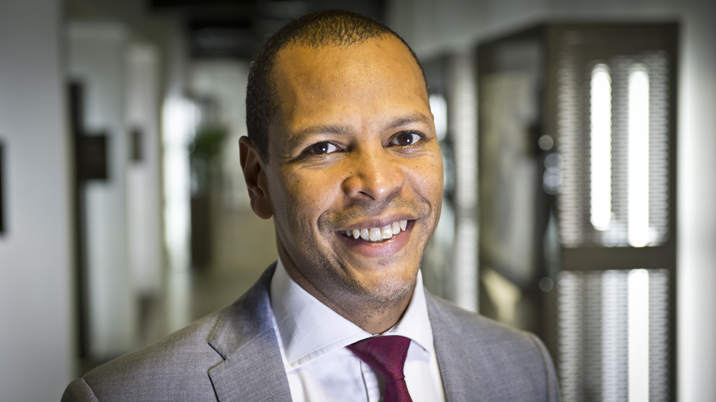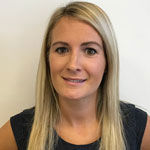
How can the UK’s newsbrands compete with the huge scale of the tech giants?
Simple. By doing something that twenty years ago would have been considered unthinkable – by joining forces.
Dominic Carter, group chief commercial officer at News UK says, “I don't believe that any media owner today, in singularity, can compete with the major platforms. So, you’ve got to drive innovation and encourage collaboration.”
“Collectively”, he continues, “all of us as publishers have a larger monthly audience reach than any of the platforms in the UK, but the things the platforms do really well is to make it easy for people to buy advertising,” based on their scale and the immense amount of first party data they collect from their logged in users.
The realisation that alone they were powerless, but together powerful, led to the setting up of the Ozone Project in 2018, an audience platform jointly owned by News UK, The Telegraph and The Guardian.
At the launch, Dora Michail, then managing director of digital at The Telegraph said: “The Ozone Project puts in place an infrastructure that creates a better marketplace for advertisers, consumers and publishers alike.”
Interviewed for the InPublishing Podcast in November, Dominic said: “By bringing together an aggregation of all audiences across all of our digital platforms, we are now able to compete at scale with audience segments led by first party data. It’s proving to be incredibly successful.”
Wireless, News UK’s radio division, has set up something similar with Bauer Radio, called Octave, “a digital audio streaming advertising business”.
Since launch, the Ozone Project has gone from strength to strength, and the original three have been joined by Reach, ESI Media, The Stylist Group, DC Thomson Media, Bauer Media and Time Out. With each new audience segment added, the value of the advertising proposition is strengthened, which gives publishers a realistic chance to compete with the tech platforms.
“Everyone competes for a share of the advertiser wallet; Ozone offers scale that can challenge the platforms and we’ve seen a four-fold growth in revenues over the last twelve months. In terms of ambition, we absolutely believe that we can continue to take a larger slice of the pie. And the investment we’ve recently announced in Ozone, to triple the headcount and make it the News UK centre of excellence for programmatic is fundamentally important.”
The Ozone offer is indeed compelling: large scale buys in a premium audience environment under trusted credible brands.
By bringing together an aggregation of all audiences across all of our digital platforms, we are now able to compete at scale.
Full funnel attribution
Delivering scale and ease of use is part of the battle against the tech giants, but it’s not the only thing.
For Dominic, almost equally pressing is sorting out the long-standing bugbear of “last click attribution”, whereby all the many media that might have influenced a purchase decision lose out when all the spoils go with the last click.
Rectifying this anomaly requires more cross industry collaboration, Dominic believes: “The biggest thing for me is when people talk about the last click attribution that goes to Google and ignore the fact that search starts with a name – people often know the brand they are looking for. What we need is better full funnel attribution which means research bodies should be encouraged to work together rather than against each other, and move towards a better understanding of consumer behaviour and the consumer journey, from inspiration all the way through to activation. I would encourage all media owners to put pressure on research companies. The challenge is, how do we provide better information to advertisers so that we become more trusted and we can give a true perspective of the value of each media, rather than everything being attributed to the last click.”
Being absent from the market will definitely hold your growth back when this pandemic is over.
Message to advertisers
2020 was a difficult year. Indeed, “in all the years I’ve worked in media, it has been the most challenging,” said Dominic who has worked in the newspaper sector since the early 90s.
Whilst consumption of newsbrands’ digital offering went through the roof, advertising dropped through the floor.
“To all intents and purposes, advertising disappeared from the market for about two months,” continued Dominic; “which meant that advertisers missed out potentially on an opportunity to tap into the consumer at that time.”
And his message for advertisers considering not advertising? “Advertisers should take the opportunity to ensure that their adverts are seen in the appropriate credible trusted media environments. It's very important for advertisers that want to see themselves successfully thriving post pandemic that they continue to communicate with their audiences. Being absent from the market will definitely hold your growth back when this pandemic is over.”
Ever the salesman.

You can hear Dominic Carter being interviewed by Ciar Byrne on a recent episode of The InPublishing Podcast, which was sponsored by Acorn Web Offset, the Yorkshire-based specialist A5 and A4 magazine printer.
This article was first published in InPublishing magazine. If you would like to be added to the free mailing list, please register here.












